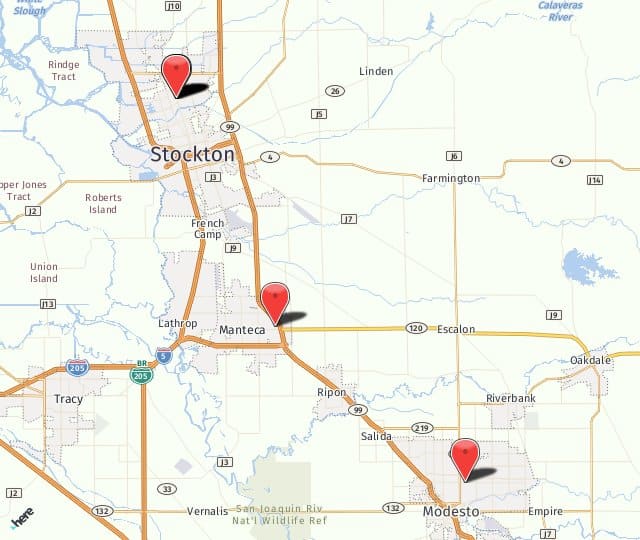Diabetic Retinopathy

At Central Valley Eye Medical Group we diagnose and treat diabetic retinopathy for our patients in Stockton, Manteca, and the surrounding areas.
What is diabetic retinopathy?
The retina is the light-sensitive tissue at the back of the eye. Its job is to receive light that the lens has focused, convert the light into neural signals, and send these signals on to the brain for visual recognition. When a person has diabetic retinopathy there are changes in the blood vessels in the retina. These vessels may swell and leak fluid. Abnormal blood vessels may grow on the surface of the retina. Diabetic retinopathy can develop in anyone who has type 1 or type 2 diabetes. The longer a person has diabetes, the more likely diabetic retinopathy will develop.
What are the symptoms of diabetic retinopathy?
One problem with diabetic retinopathy is that it often doesn’t show early symptoms, but damage can be occurring in the eye. It usually affects both eyes. Symptoms may include:
- Floaters
- Blurred vision
- Fluctuating vision
- Impaired color vision
- Dark or empty areas in your vision
- Vision loss
If you have diabetes, it’s imperative to see the team at Central Valley Eye Medical Group for yearly eye exams. During dilation, we can spot early signs of diabetic retinopathy.
How is diabetic retinopathy treated?
Treatment depends on if you have nonproliferative (early stage) or proliferative (advanced) diabetic retinopathy. In early stages, simply managing your blood sugar effectively can slow the progression of diabetic retinopathy. Medications are showing promise in preventing abnormal blood vessels from forming in the eye, but they are under study at this point.
If you have proliferative diabetic retinopathy, you’ll need surgical treatment. We may use these surgeries, depending on your situation:
- Focal laser treatment— In this procedure, laser energy is used to either stop of slow the leakage of blood and fluid in the eye. Also called photocoagulation, laser burns close the leaking vessels.
- Scatter laser treatment— Also known as panretinal photocoagulation, here the areas of the retina away from the macula are treated with scattered laser burns. These burns cause the new abnormal blood vessels to shrink and scar.
- Vitrectomy— This surgical procedure creates a tiny incision in your eye to remove blood from the vitreous, as well as the scar tissue that is pulling on the retina creating detachment.
These surgeries are very successful in preventing blindness in most people with diabetic retinopathy.
If you have diabetes, it’s imperative you have yearly eye exams so that diabetic retinopathy can be spotted early on, when treatment is most effective. Call us at Central Valley Eye Medical Group, (800) 244-9907, to schedule your next eye exam.
Posted in: Comprehensive Eye Exams, Diabetic Eye Care

